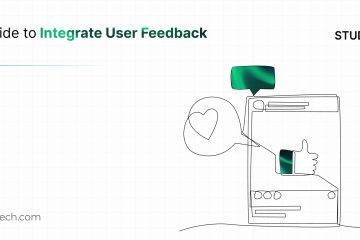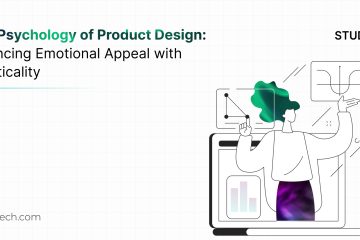As McKinsey & Company reports, businesses that excel in design and UX outperform industry benchmarks by 2:1 in revenue growth. In an increasingly crowded marketplace, a superior user experience can be the differentiator that sets your product apart, drives user engagement, and fosters brand loyalty.
This is where UX evaluations come into play.
A UX evaluation examines a product’s interface and user experience to discover areas for improvement. Here are convincing reasons why every design requires a UX review, as well as a useful checklist for ensuring your product is user-friendly.
UX Review – A Tool to Boost Usability and Increase Customer Satisfaction
A UX review focuses on how easy it is to use a product. UX professionals can identify usability concerns that may be preventing people from using a design by examining its intuitiveness and user friendliness. Improving usability guarantees that users can explore and interact with the product without frustration, resulting in increased satisfaction and retention rates.
For example, if consumers abandon their shopping carts on an e-commerce site, a UX study may reveal that the checkout process is overly difficult. Simplifying this procedure can result in improved revenue and satisfied customers.
Let’s dive into more reasons for investing in a UX review.
Identifies and resolves pain points
Users may encounter a variety of issues while using a product, such as confused navigation, slow load times, or hard-to-find features. A UX review systematically detects these issues through user testing, surveys, and analytics, allowing designers to address and resolve them more efficiently.
For example, a mobile app may have a high uninstall rate because users struggle to identify crucial features. A UX review can help detect this problem and provide design modifications to make these functionalities more accessible.
Improves accessibility
UX design critically incorporates accessibility, guaranteeing a product’s usability for individuals with diverse abilities and limitations. A UX assessment assesses the product’s accessibility compliance, detecting any impediments that may hinder users with disabilities from having a pleasant experience.
For example, if a website is not screen reader-friendly, visually impaired visitors may struggle to explore it. A UX assessment can suggest changes such as adding alt text to images and optimizing keyboard navigation to improve accessibility.
Improves customer satisfaction and loyalty
A well-executed UX review results in a more fun and efficient user experience, which positively influences customer satisfaction. Satisfied users are more likely to become repeat customers and product champions, resulting in positive word-of-mouth and higher customer retention.
A UX review increases the user experience of a banking app, making it easier for customers to complete transactions and manage their accounts, resulting in increased customer satisfaction and lower churn.
informs better design decisions.
UX evaluations provide useful insights and data-driven recommendations that help designers make better decisions. This iterative method enables designers to build things that are not only physically beautiful but also extremely functional and user-friendly.
For example, an early-stage prototype may appear great but perform poorly. A UX assessment can identify key design faults and help designers make informed decisions that improve both aesthetics and usefulness.
A Practical Checklist for Developing User-Friendly Software
Follow this complete checklist to ensure your product delivers an excellent user experience:
Know your users.
Have you developed profiles for various categories of users?
Do you understand what the users desire to achieve?
Have you spoken with or polled users for insights?
Check the information structure.
Is the navigation basic and straightforward to use?
Are the categories and labels clear?
Can users access information quickly?
Look at the visual design.
Is there a clear visual hierarchy that directs consumers to the most critical information first?
Are the fonts easy to read across different devices?
Do the colors and contrast make the writing easier to read?
Test on different devices to ensure accessibility.
Does it adapt well to varying screen sizes?
On touchscreens, are interactive features simple to tap?
Have you tried it with screen readers and other assistive technologies?
Check usability.
Have you tested the app on actual users?
Are error messages useful and clear about how to resolve problems?
Is it easy for users to learn and remember how to use the software?
Evaluate interactions.
Are buttons and links easily identified?
Do the forms include clear feedback and validation messages?
Are the animations fluid, helpful, and not distracting?
Check the content quality.
Is the content easy to read and comprehend?
Are the instructions and labels concise and helpful?
Does the content fit the user’s needs and goals?
Review performance.
Does the program load rapidly across multiple devices and networks?
Have you optimized images and media to load faster?
Are there any performance concerns that require resolution?
Ensure security and privacy.
Are security best practices used, such as encryption and secure logins?
Is user data handled in accordance with privacy laws?
Are privacy policies clear and easily accessible?
Gather and act on feedback.
Have you built up options for users to provide feedback?
Do you routinely review and act on this feedback?
Do you interact with users about upgrades and improvements?
In Summary
A UX review may greatly help any design, including websites, applications, and digital interfaces. A UX review guarantees that the finished product is both functional and enjoyable to use by improving usability, identifying pain points, improving accessibility, increasing customer happiness, and informing better design decisions. Using a practical checklist to guide the development process helps to ensure that the product is user-friendly. Investing in UX reviews is a strategic decision that results in more successful products and happy users.


